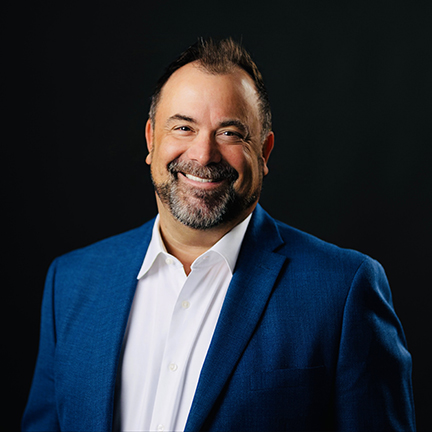
Seeking medical attention, reporting the crash, collecting evidence, understanding liability, monitoring your injuries, and keeping deadlines in mind are examples of seven things to do after a bicycle accident. Also, contact a Tacoma bicycle accident lawyer.
In a single moment, what started as a routine ride can turn into expensive medical bills, a lot of time away from work, and months of recovery. For cyclists, the aftermath can feel like too much to handle on your own, but the good news is you don’t have to figure it out by yourself.
The sooner you reach out to an attorney in your area, the sooner your legal counsel can tell you about your rights, explain how Washington state laws apply to your case, and advise you about the practical steps you should follow to protect yourself. This level of guidance is invaluable.
1. Put Your Health First, No Matter What
Even if you think your injuries are minor, get checked by a medical professional right away. Bicycle crashes often result in trauma that isn’t obvious at the scene. In fact, concussions, internal bleeding, and torn ligaments can all take hours, if not days, to reveal themselves.
Early documentation also creates a strong medical record, which is important when it comes time to connect your injuries directly to the incident. Emergency care, urgent care visits, and follow-up appointments with specialists all form the trail of evidence you’ll need for your case.
For a free legal consultation, call (253) 238-2558
2. Secure the Scene and Gather Evidence
Calling 911 is vital, not just for receiving immediate help but also for creating an official police report. This report will include the driver’s information, statements from witnesses, and the officer’s initial assessment of what happened.
If you’re able, gather these details at the scene:
- Photos or video of your bike, the vehicle, the road layout, and traffic signs
- Contact information for witnesses who saw the collision
- The driver’s license plate and insurance details
- Notes about weather, lighting, and traffic conditions at the time
Even small details—like skid marks or the position of your bike—can become important later when proving what happened.
3. Learn How Washington’s Comparative Fault System Works
Cyclists often wonder how liability is determined after a crash. As outlined in RCW § 4.22, Washington uses a comparative fault system, which means you can still recover damages even if you share some degree of responsibility.
For example, if you were riding outside of a bike lane or failed to signal before making a turn, an insurer might argue that you were partly liable. If a court finds you 20% responsible, your compensation would be reduced by that percentage.
This system makes it especially important to understand your rights, as insurers may use it to minimize payouts.
Click to contact our personal injury lawyers today
4. Understand Which Insurance Coverage Applies to Your Case
Bicycle accident claims can involve several layers of insurance coverage, depending on the circumstances:
- The driver’s auto insurance
- Your own auto insurance
- Health insurance for immediate and ongoing medical care
- Other policies, like homeowner’s or renter’s insurance
Knowing every possible source of compensation can mean the difference between covering all your losses and being left with unexpected expenses.
Complete a Free Case Evaluation form now
5. Don’t Miss the Statute of Limitations
Washington law gives you three years from the date of your bicycle accident to file a personal injury claim. If you miss this deadline, you’ll usually lose your right to compensation.
While 36 months might sound like plenty of time, the clock can run down quickly when you’re focused on receiving medical treatment and getting your life back in order. Acting early also makes it easier to preserve evidence and ensure witnesses are still available.
6. Avoid Common Pitfalls
The period after a bicycle accident is stressful, and mistakes made early on can hurt your ability to recover compensation. These are common pitfalls you’ll want to avoid at all costs, such as:
- Speaking too freely with insurance adjusters before knowing your rights
- Waiting too long to get medical treatment or skipping follow-up care
- Accepting a quick settlement offer that doesn’t cover your long-term costs
- Ignoring psychological or emotional symptoms that develop later on
7. Reach Out for Legal Support Matters After a Bike Crash
Bicycle accidents often come with added complications, such as disputes over who had the right of way and arguments about traffic laws. Additionally, insurers may attempt to undervalue your injuries or your damaged bike.
An experienced attorney can carry out the following tasks on your behalf:
- Push back against insurance companies that minimize your claim
- Make sure the must-have evidence is collected and preserved
- Calculate both your immediate and long-term losses
For many riders, legal support is about more than money. It’s about making sure their rights are respected and their story is heard.
Call Dan Next for More Information About the Things You Should Do After a Bicycle Accident in Washington State
Bicycle accidents in Washington can reshape nearly every part of a victim’s life. That said, the steps outlined above provide a roadmap for recovery. Even so, the road ahead might still feel overwhelming, but a pedestrian accident attorney in Tacoma can calm your nerves.
Injured in a bicycle accident? Call Dan Next! With our lawyers by your side, you can trust that your rights are protected at all times. When you need assistance in regaining stability, moving forward with clarity, and pursuing full and fair compensation, turn to our dedicated and experienced team at NextLaw.
Our Tacoma pedestrian accident attorneys have more than 100 years of combined experience handling cases like yours. Call us now to kickstart your recovery.
Call or text (253) 238-2558 or complete a Free Case Evaluation form



